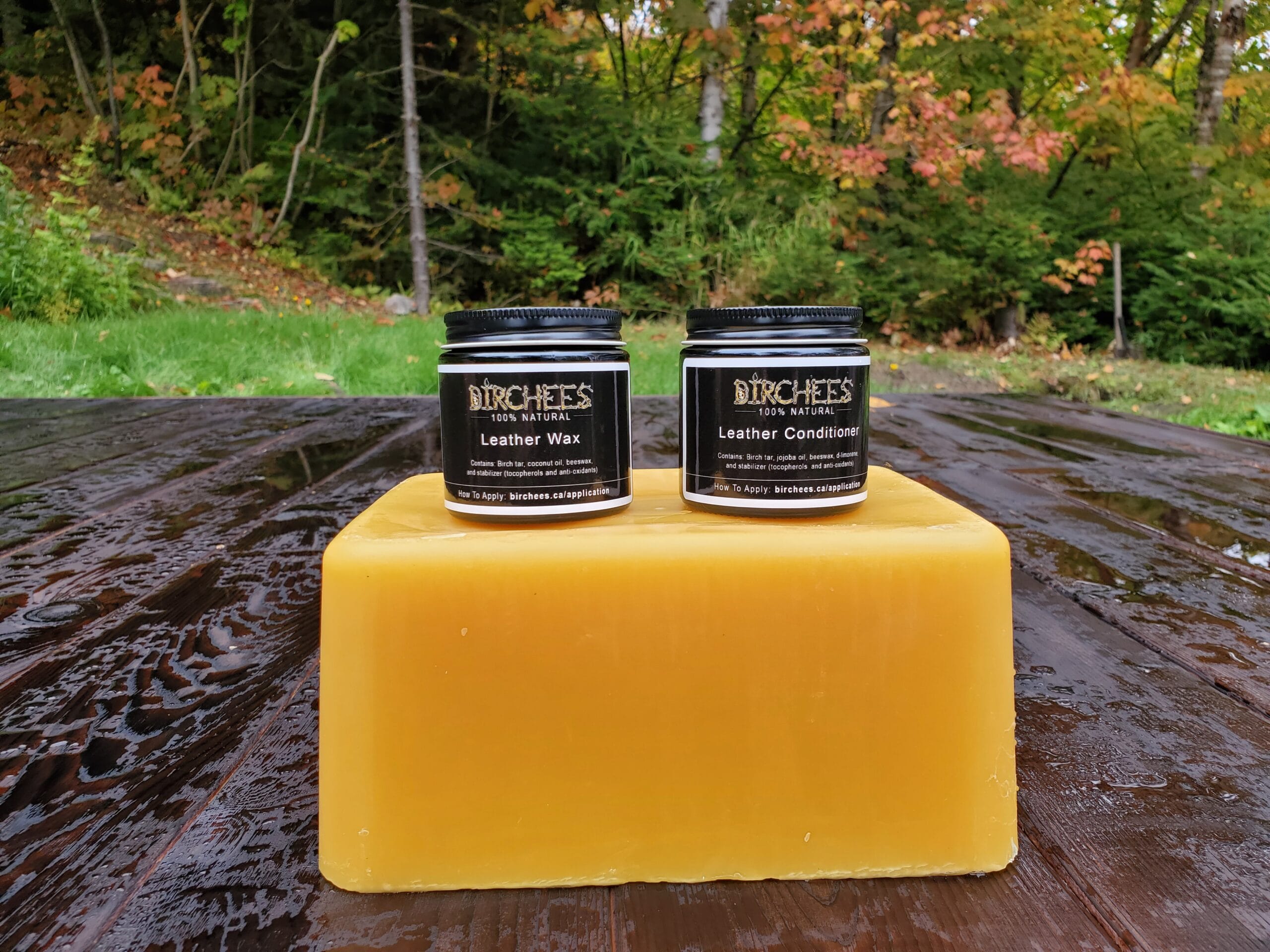Does Beeswax Penetrate Leather?
When people think about leather care, beeswax is one of the first ingredients that comes to mind. It has been used for centuries to protect and beautify leather, creating a glossy surface and helping repel water. But a common question arises: does beeswax actually penetrate leather, or does it just sit on top? The answer is nuanced—and it directly connects to how Birchees Leather Conditioner is formulated.
The Nature of Beeswax and Leather
Beeswax is a high–molecular weight, hydrophobic mixture. This means it naturally resists water and doesn’t easily soak deep into porous materials like leather. In most cases, beeswax alone will form a surface film rather than moving far into the collagen fiber network of leather (Workshop Companion). This surface effect is valuable—it adds water resistance and creates a protective barrier—but it is not the same as deep conditioning.
Leather itself is a fibrous collagen structure. To maintain its flexibility and strength, it benefits from oils and fats that can move between the fibers. These lighter molecules act as plasticizers, keeping leather supple and preventing cracks.
How Birchees Conditioner Works Differently
Our formula pairs beeswax with three other carefully chosen natural ingredients:
-
d-Limonene – a natural citrus-derived solvent that can dissolve and disperse waxes (ChemistryOpen, 2024). In our blend, d-limonene helps the beeswax spread evenly, improves wetting on the leather surface, and carries smaller wax components into pores that plain melted wax would not reach.
-
Jojoba oil – a liquid wax ester with small, stable molecules that penetrate more deeply than beeswax. Jojoba conditions leather fibers and stays mobile even after application.
-
Birch tar – a traditional leather treatment that contains natural oils and phenolic compounds. It complements jojoba by adding long-lasting conditioning power.
The synergy of these ingredients means that beeswax does more than sit on the surface. d-Limonene acts as the carrier, jojoba and birch tar work as penetrating oils, and beeswax forms a protective layer at or just below the grain. This creates a layered effect: surface water resistance plus subsurface conditioning.
Patents for leather conditioners show that d-limonene has long been recognized for its role as a carrier and penetrating agent (US5415789A). Our approach adapts this knowledge to a natural, wax-based conditioner.
A Time-Release Effect
One of the often overlooked benefits of combining wax with oils is how the mixture behaves as leather flexes and wears. The beeswax provides structure, holding oils in place. Over time, as the leather bends and warms during use, oils like jojoba gradually migrate from the wax matrix into the fibers. This acts as a time-release system, replenishing lubrication inside the leather while maintaining protective wax at the surface.
This dual action explains why customers find their leather remains supple for longer after treatment with Birchees Conditioner compared to using straight wax or oil.
Putting It All Together
So, does beeswax penetrate leather? On its own, not very far. But in a thoughtfully designed formula like Birchees Conditioner, beeswax becomes part of a system that:
-
Protects the surface with a breathable, water-resistant layer.
-
Uses d-limonene to help waxes and oils wet the leather and enter pores.
-
Conditions below the surface through penetrating oils like jojoba and birch tar.
-
Provides a time-release effect as leather flexes and moves.
The result is leather that looks better, feels better, performs better, and lasts longer.
References
-
Workshop Companion — Hardwax Finish (accessed 2025):
https://workshopcompanion.com/know-how/materials/finish/hard-wax-finish.html -
US Patent 5415789A — Leather cleaner and conditioner:
https://patents.google.com/patent/US5415789A/en -
Research article (ChemistryOpen, 2024) — dl‑Limonene as an Alternative Sustainable Solvent:
https://www.researchgate.net/publication/386741068_dl-Limonene_as_an_Alternative_Sustainable_Solvent_to_Xylenes_for_the_Industrial_Preparation_of_Release_Formulations -
Sapra et al. (2008) — Percutaneous Permeation Enhancement by Terpenes (PubMed Central):
https://www.ncbi.nlm.nih.gov/pmc/articles/PMC2751457/ -
Leatherworker.net — DIY conditioner discussion threads (examples):
https://leatherworker.net/forum/topic/111618-diy-leather-conditioner/page/15/
https://leatherworker.net/forum/topic/90151-birchees-leather-conditioner-oil-free-samples/

